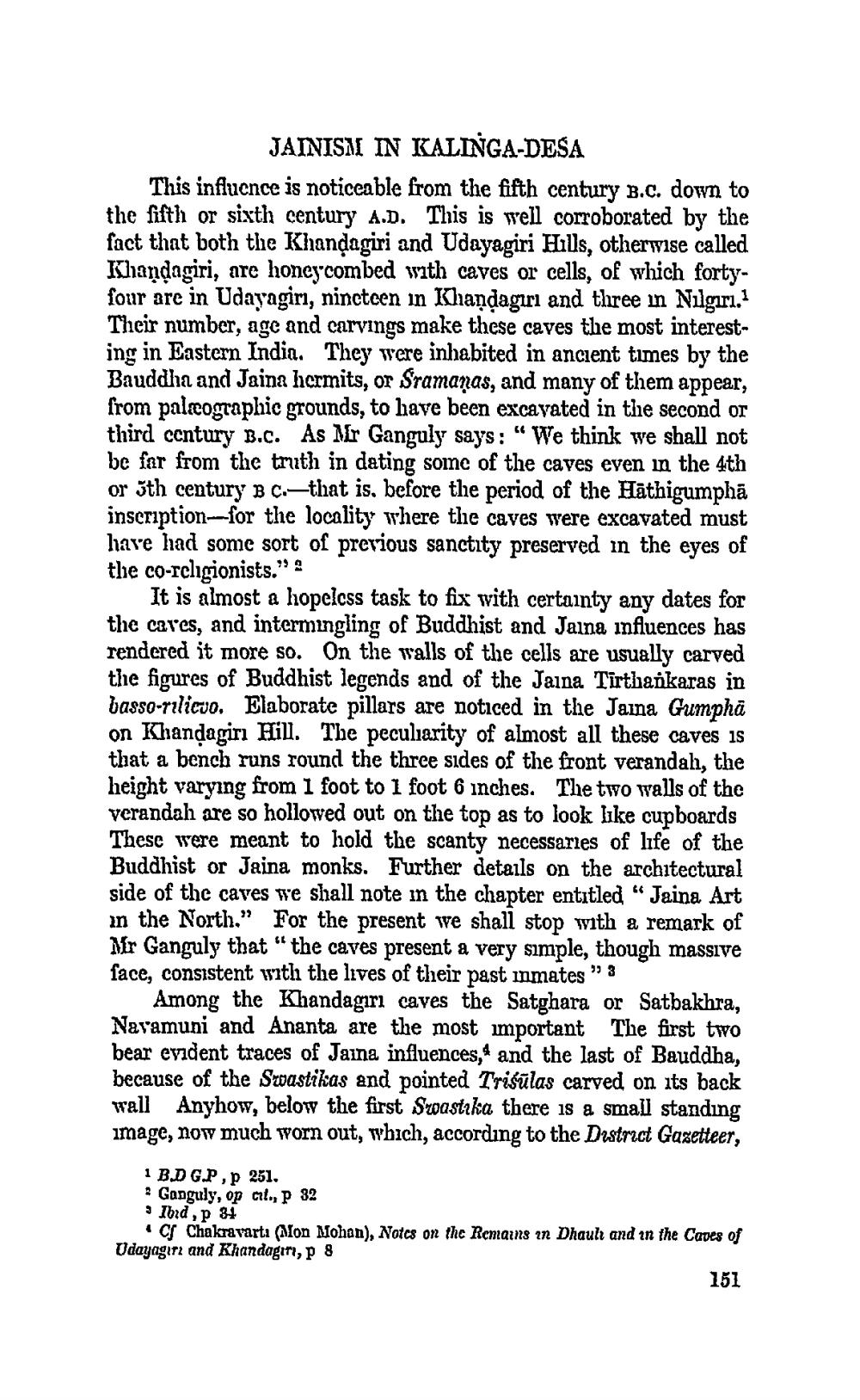________________ JAINISM IN KALINGA-DESA This influence is noticeable from the fifth century B.C. down to the fifth or sixth century A.D. This is well corroborated by the fact that both the Khandagiri and Udayagiri Hills, otherwise called Khandagiri, are honeycombed with caves or cells, of which fortyfour are in Udayagiri, ninctcen in Khandagiri and three in Nilgiri. Their number, age and carvings make these caves the most interesting in Eastern India. They were inhabited in ancient times by the Bauddha and Jaina hermits, or Sramanas, and many of them appear, from pal.cographic grounds, to have been excavated in the second or third ccntury B.C. As Mr Ganguly says: " We think we shall not be far from the truth in dating some of the caves even in the 4th or 3th century BC.--that is, before the period of the Hathigumpha inscription--for the locality where the caves were excavated must have had some sort of previous sanctity preserved in the eyes of the co-religionists." It is almost a hopeless task to fix with certainty any dates for the caves, and intermingling of Buddhist and Jaina influences has rendered it more so. On the walls of the cells are usually carved the figures of Buddhist legends and of the Jaina Tirthankaras in bassorilievo. Elaborate pillars are noticed in the Jaina Gumpha on Khandagiri Hill. The peculiarity of almost all these caves is that a bench runs round the three sides of the front verandah, the height varying from 1 foot to 1 foot 6 inches. The two walls of the verandah are so hollowed out on the top as to look like cupboards These were meant to hold the scanty necessaries of life of the Buddhist or Jaina monks. Further details on the architectural side of the caves we shall note in the chapter entitled " Jaina Art in the North." For the present we shall stop with a remark of Mr Ganguly that "the caves present a very simple, though massive face, consistent with the lives of their past inmates" 3 Among the Khandagiri caves the Satghara or Satbakhra, Navamuni and Ananta are the most important The first two bear evident traces of Jaina influences, and the last of Bauddha, because of the Swastikas and pointed Trisulas carved on its back wall Anyhow, below the first Swastika there is a small standing image, now much worn out, which, according to the Drstrict Gazetteer, 1 B.DGP, 251. ? Gonguly, op at., P 82 Ibrd, p 81 * Ch Chakravarti (Mon Mohan), Notes on the Remains in Dhaul and in the Caves of Udayagiri and Khandagm, p 8 151




